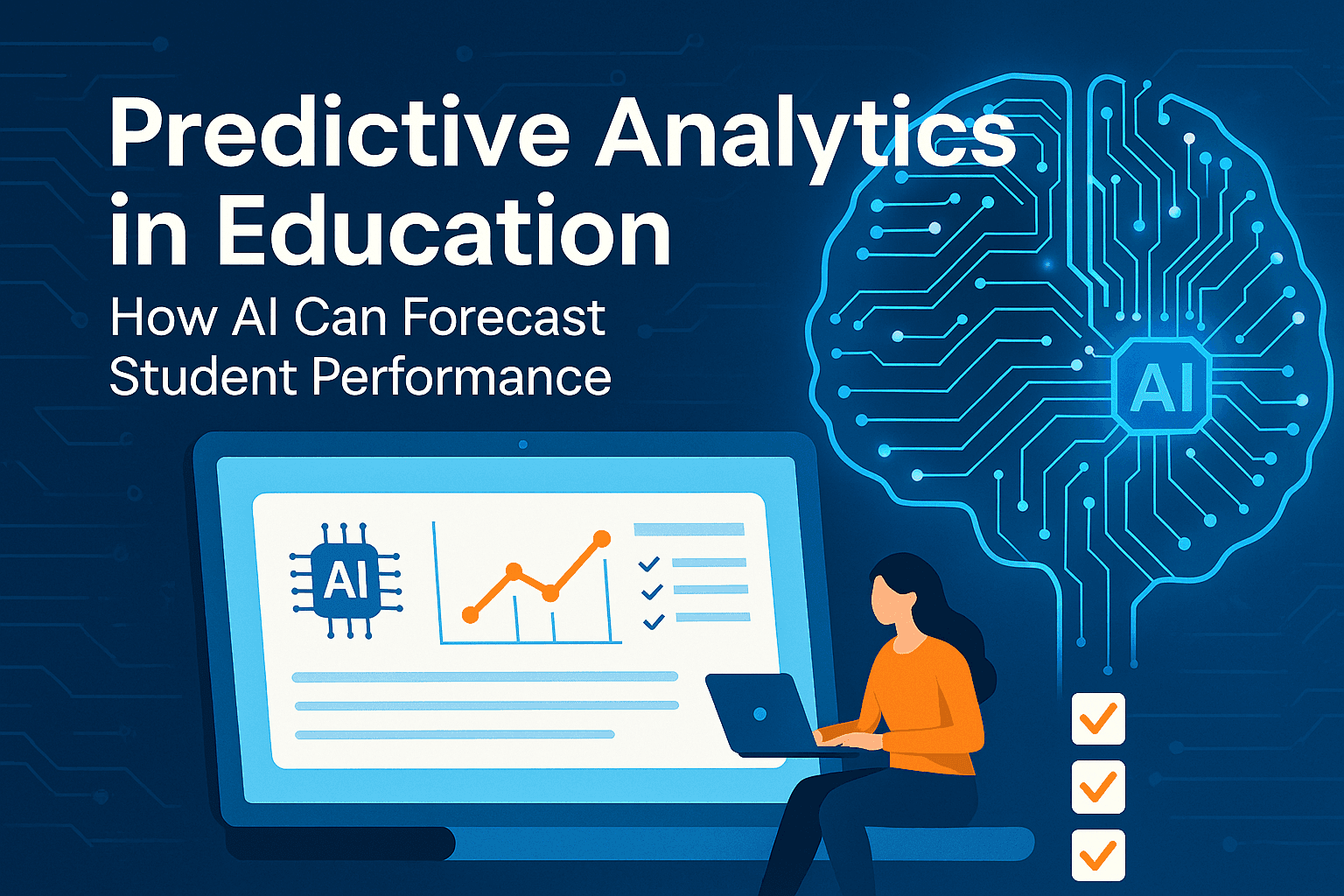Powerful Benefits of Predictive Analytics in Education: How AI Accurately Forecasts Student Performance

Predictive analytics in education is transforming how institutions support learners, enhance academic outcomes, and make data-informed decisions. Powered by artificial intelligence (AI) and machine learning algorithms, predictive analytics offers educational leaders a forward-looking lens into student behaviour, performance, and engagement trends—empowering them to intervene proactively rather than reactively.
At the heart of this innovation is the concept of forecasting student performance. By analysing historical data, learning behaviour, demographics, attendance, and assessment patterns, AI-driven systems can predict which students are at risk of underperforming, disengaging, or dropping out. These insights can then be used to design targeted support mechanisms, enabling educators to act before challenges escalate.
The Future of Education: AI and Digital Transformation in the Classroom
One of the most powerful benefits of predictive analytics in education is its ability to uncover hidden patterns in student data. For example, a student who frequently logs in late to virtual classes, misses low-stakes quizzes, and submits assignments close to the deadline may not raise immediate concern through human observation. However, AI algorithms can combine and analyse these factors to highlight early warning signs, triggering personalised support actions such as mentoring, academic coaching, or adjusted learning pathways.
Another key area where predictive analytics in education proves invaluable is retention planning. Higher education institutions are increasingly using AI tools to forecast enrolment persistence. With predictive models, universities can identify which students are likely to withdraw due to financial stress, academic pressure, or lack of engagement—and then implement timely interventions such as financial aid reminders, peer support groups, or flexible learning options.
Importantly, AI in education enables personalised learning at scale. Once risk indicators are flagged, educators can use the insights to tailor instruction. For instance, students struggling with foundational concepts in mathematics might be redirected to adaptive learning modules or assigned a digital tutor powered by generative AI. This level of personalisation—previously unattainable in large cohorts—is now possible through real-time data analysis and intelligent automation.
The benefits extend to curriculum and institutional planning as well. Administrators can use student data analytics to evaluate the effectiveness of programmes, teaching methods, and course design. If a specific module consistently sees a drop in performance, predictive insights can inform curriculum redesign or enhanced instructor training. The use of learning analytics tools helps institutions move from assumptions to actionable intelligence.
Moreover, predictive analytics in education supports equity and inclusion goals. By identifying underserved or underperforming student groups early on, institutions can allocate resources more strategically. For example, first-generation students or learners from underrepresented backgrounds may face additional challenges. With predictive systems, targeted support—such as bridging workshops, one-to-one mentoring, or tailored digital content—can be provided in time to make a meaningful impact.
Nevertheless, the rise of AI in education brings important ethical considerations. Student data privacy and consent are paramount. Institutions must ensure transparent data practices, obtain informed consent, and comply with data protection regulations such as GDPR. It is equally critical to prevent algorithmic bias. Predictive models should be regularly reviewed and tested to ensure fair and unbiased outcomes across all demographics.
Transparency is essential for building trust. Educators and students should be aware of how predictions are made and what data is being used. Black-box algorithms—where decisions are made without explanation—can lead to resistance and ethical challenges. Human oversight must remain central to all predictive decision-making processes in education.
Looking ahead, the future of predictive analytics in education is deeply promising. As AI models become more sophisticated, the ability to forecast not only academic performance but also emotional engagement, collaboration patterns, and career readiness will expand. Tools will likely evolve into intelligent learning companions, offering just-in-time nudges, personalised reminders, and proactive academic advice.
Institutions that embrace predictive analytics now will be better equipped to enhance student success, reduce dropout rates, and optimise resource allocation. With the right balance of innovation, ethics, and strategic vision, AI-powered forecasting can help educators shift from reactive remediation to proactive empowerment.
Visit The Case HQ for 95+ courses
Read More:
Game-Changing Power of Automating Constructive Feedback Using LLMs in Education
Critical Ethical Considerations in AI-Based Testing Every Educator Must Know
How to Build a Powerful AI-Enabled Assessment Ecosystem for Future-Ready Learning
How AI Simplifies Grading and Reporting Workflows for Educators and Institutions
AI Assessment in STEM vs Humanities: Key Differences Every Educator Should Understand
What Is CAIBS? Discover the Certified AI Business Strategist Program Driving the Future of Work
Certified AI Business Strategist (CAIBS): A Complete Guide to AI Strategy Certification
Inside the CAIBS Course: What You’ll Learn in the Certified AI Business Strategist Program
Why CAIBS Is the #1 Choice for AI Business Professionals in 2025
https://thecasehq.com/powerful-benefits-of-predictive-analytics-in-education-how-ai-accurately-forecasts-student-performance/?fsp_sid=897
Comments
Post a Comment